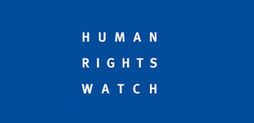Worldwide, 132 million children and adolescents are out of school.1 Families are unable to send their children to school for many reasons. In some cases, it is considered inappropriate for girls to attend school. Families living in rural areas or in countries that are affected by war may not have access to schools. Some children must work at home or earn a wage to contribute to their families' livelihoods, leaving them with little time for school. For many other young people, the path to school is blocked by a lack of ability to pay for school fees, supplies, uniforms and transportation.2
In 2000, the UN recognized education for all children as one of the Millenium Development Goals (MDGs). Now, 4 out of 5 countries in the world promise free primary education to their citizens.3 Since the MDGs were established, the total number of Out of School children has fallen by about 40 million.4 In Kenya alone more than 1.3 million children entered schools within a matter of weeks when the government abolished fees for primary school.5 The education these students receive will help them live longer lives and have healthier families.6 Each additional year of school they attend will help them earn about 10% more on average than they would have otherwise.7
Despite this progress, problems persist. Of all of the world's out of school children, 80% live in rural areas, and 55% are girls.8 As long as access to education remains a function of what students look like, who their families are, and where they are born, opportunity may not be shared equally.
On this page, you can engage in discussions about how education impacts yourself, your family, and your nation. What prevents young people from achieving an education in your country? What would your life be like without an education? Do you believe that education is a human right?
1. UN Institute for Statistics; 2 & 3. UNESCO Global Education Digest 2011; 4. UN Millenium Development Goals Report 2011; 5. UNICEF; 6. World Health Organization Global Status Report 2010; 7. UNESCO Education for All Global Monitoring Report 2012; 8. G8 Education Experts Report 2009
|
Global Campaign For Education The Big Read This short video was made in 2009 as a part of a campaign to encourage governments to prioritize education for all. |

|
The "Time for School" series on PBS follows the seven students in seven countries through twelve years of school. This is the second installment in the series, filmed three years after students' first day of school. Watch Part 4 on Benin and Japan to learn what life is like in two drastically different school systems. Wide Angle is the only program exclusively dedicated to international current affairs documentaries. |

|
This report by the UN's Educational, Scientific and Cultural Organization describes the benefits of education and the issues contributing to lack of access. |

|
Read about recent world events that prevent students from attending school. Watch videos, see photos, and read stories about students that struggle to get access to education. The Human Rights Watch "focuses international attention where human rights are violated, to give voice to the oppressed and hold oppressors accountable for their crimes." |

|
In the US education is free through high school, but high tuition fees prevent many students from attending college. Learn about the problem of access to higher education in the US through the work and research of the Gates Foundation, the largest mission-driven private foundation in the world. |